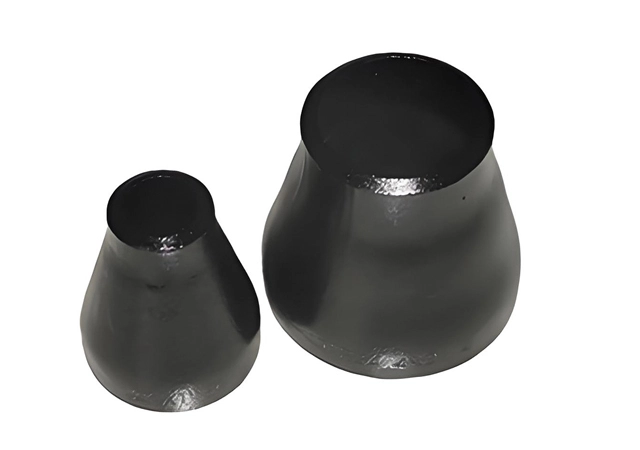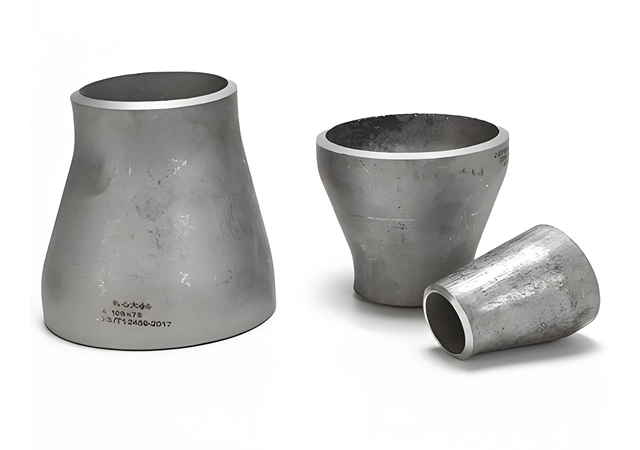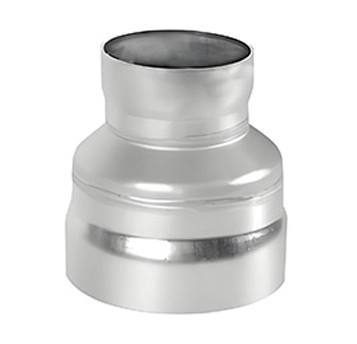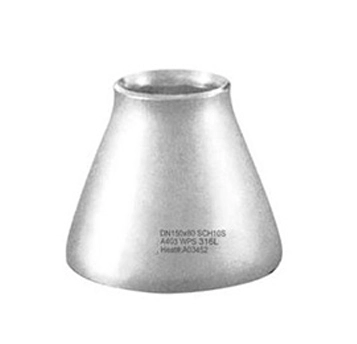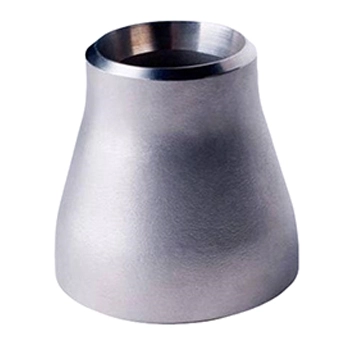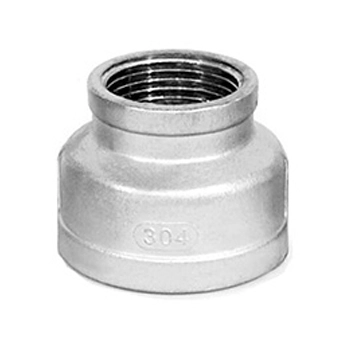Carbon steel reducer is a type of pipe fitting used in piping systems to connect two pipes of different diameters. It allows for a change in the flow diameter of the pipeline, ensuring a smooth transition between pipes of varying sizes. Carbon steel reducers are made from carbon steel, a durable and strong material known for its high tensile strength, resistance to wear, and ability to withstand high pressure and temperature.
Concentric Reducer:
Has a symmetrical, cone-shaped design with both ends aligned on the same axis.
Used when the centerlines of the larger and smaller pipes need to be maintained.
Commonly used in vertical piping systems.
Eccentric Reducer:
Has one edge that is flat or offset, creating an asymmetrical design.
Used to prevent air accumulation in horizontal piping systems.
Often employed in pump suction lines or pipelines where drainage is critical.
Material Strength and Durability
Carbon steel is known for its high tensile strength and durability, making reducers resistant to wear, impact, and mechanical stress.
Corrosion Resistance
While carbon steel is not as corrosion-resistant as stainless steel, it can be treated with coatings or galvanization to improve its resistance to rust and corrosion.
Weldability
Carbon steel is easy to weld, allowing for seamless integration into piping systems.
High Temperature and Pressure Resistance
Carbon steel reducers can handle extreme temperatures and pressures, making them suitable for high-stress environments like steam pipelines or hydraulic systems.
Welding includes butt welding and socket welding.
Butt welding is to weld the reducer to the end of the pipe. The weld must be smooth and defect-free. It is suitable for high-temperature and high-pressure pipelines such as petroleum and chemical industry, and can ensure reliable connection.
Socket welding is to insert the pipe into the socket of the reducer and then weld it. It is often used for small diameter and low pressure pipelines.
Threaded connection is to set internal or external threads at both ends of the reducer, and tighten it with the threaded part of the pipe. It is easy to operate and suitable for low pressure and small diameter pipelines such as building water supply and drainage, small gas, etc., but the sealing and pressure resistance are poor.
Flange connection is to install flanges at both ends of the reducer and the pipeline, connected by bolts and gaskets, which is easy to install and disassemble. It is often used for pipelines that need frequent maintenance and replacement, as well as large diameter, medium and high pressure pipelines in power plants and chemical plants, but high-quality gaskets are required to ensure sealing.
Chemical and petroleum industries for handling oil, gas, and chemicals.
Water treatment and plumbing systems.
Construction and industrial processes where high-pressure and high-temperature resistance are required.

 EN
EN
